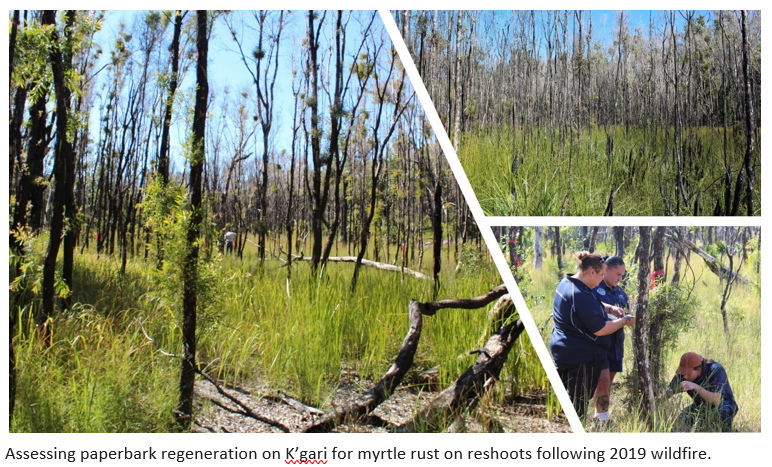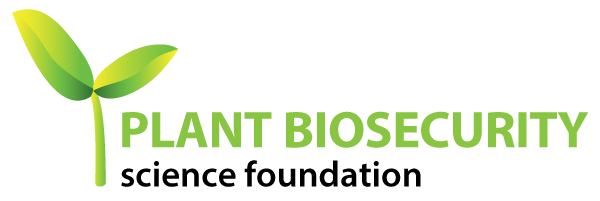Project Leader, Organisation
Geoff Pegg, Queensland Department of Agriculture and Fisheries
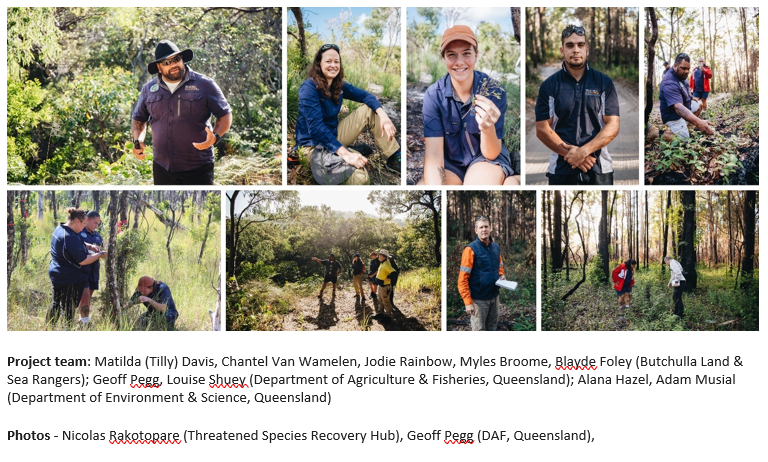
Status
COMPLETE
Background
Exotic pests threaten cultural and environmental biodiversity values unique to Australia. Myrtle rust is a significant invasive pathogen of the native environment. The Australian Government has responsibility for maintaining World Heritage values under the World Heritage Convention ensuring biosecurity risks are identified and managed. PBSF012 delivered training to First Nations People in Myrtle rust symptom identification and assessment. A number of species on K’gari were identified as being susceptible, including the iconic Satinay and ecologically significant Melaleuca quinquenervia. This project looks to expand on these findings, extending training to Queensland Parks and Wildlife Service increasing capacity to assist in the development of management strategies.
Progress …
The progress report can be downloaded here.
Final Report
Exotic pests threaten cultural and environmental biodiversity values unique to Australia, prime topical examples being myrtle rust affecting Australian Myrtaceae and the more recent decline of Bunya pines in the Bunya Mountains National Park. This project aims to develop and deliver training that enhances environmental biosecurity awareness, thereby increasing the capacity of the Butchulla, the traditional custodians of K’gari (Fraser Island), to detect, monitor and report on priority pests that may threaten culturally and environmentally significant species within Fraser Island (K’gari) World Heritage Area.
Training
This project initiated a train-the-trainer program to allow the extension of environmental biosecurity awareness and reporting capacity. Training in partnership with the Butchulla Land and Sea Rangers (BLSR) has been extended to Queensland Parks and Wildlife Service (QPWS) staff and community rangers including Landcare groups from Hervey Bay and Sunshine Coast (Gubbi Gubbi). An opportunity to develop networks for BLSR was provided through closely aligned PBSF projects, with workshops held with the Coffs Aboriginal Land Council and Minyumai Indigenous Protected Area (IPA). BLSR presented outcomes of the work on K’gari highlighting the importance of partnerships and communication within the community around what we are trying to protect.
Additionally, training in myrtle rust assessment and monitoring has been conducted, including in wildfire affected sites. General forest health surveys were also conducted with BLSR focussed on high-risk sites, primarily those with high visitation rates, and areas of significant tree dieback. Training included decontamination procedures, impact assessment, symptom description and sample collection methods.
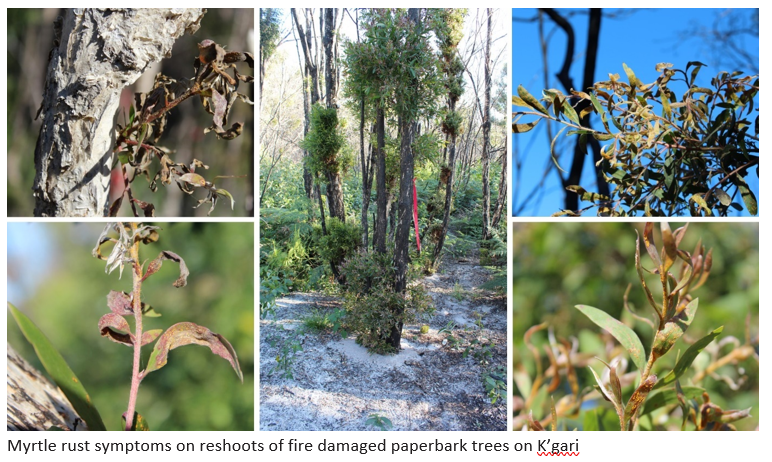
Myrtle rust
Surveys have identified myrtle rust affecting Myrtaceae species in a wide range of ecosystems on the island. Myrtle rust impacts have been most significant in fire regeneration sites. The disease was detected for the first time on Satinay (Syncarpia hillii) occurring on seedlings and reshoots from fire affected trees. Substantial impacts were also recorded on regeneration of fire affected paper bark (Melaleuca quinquenervia) and black butt (Eucalyptus pilularis). Increasing levels of infection were noted on cinnamon myrtle (Backhousia myrtifolia) in disturbed and undisturbed sites. Infection on silky myrtle (Decaspermum humile) was detected for the first time on K’gari with dieback on affected saplings.
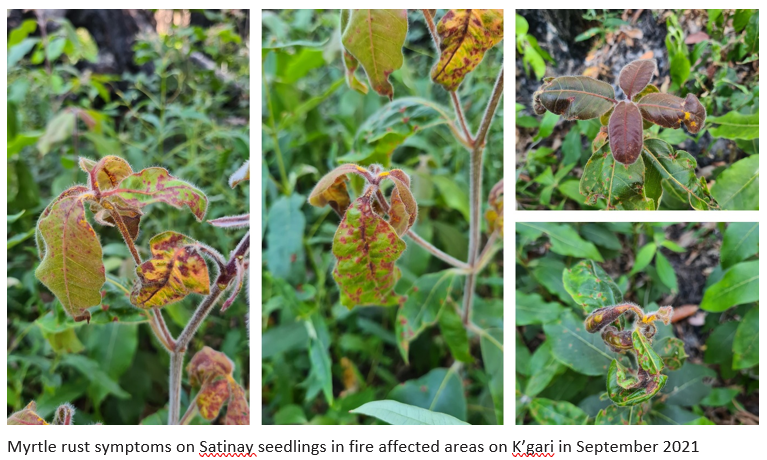
Capturing germplasm – species conservation strategy
Extensive fire damage across the island prevented any opportunity to collect germplasm (seed) of myrtle rust affected Myrtaceae on K’gari. However, through additional National Heritage Grant funding, sampling and storage equipment have been purchased. BLSR also completed a seed collection and storage training workshop run by Gavin Phillips from Australian PlantBank, Sydney Botanic Gardens. Capacity to maintain collections and run the associated nursery based at Eurong on K’gari is currently run through a volunteer program. Significant investment is required to ensure this nursery can produce seedlings for regeneration programs and species conservations programs on the island.
